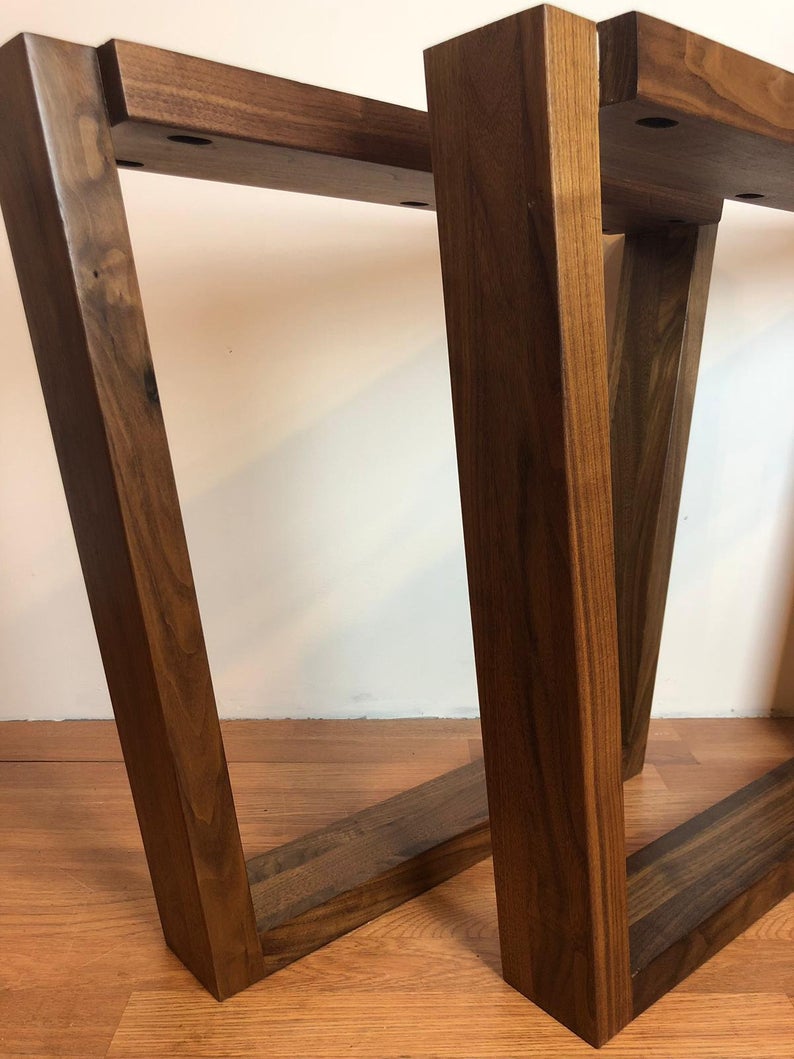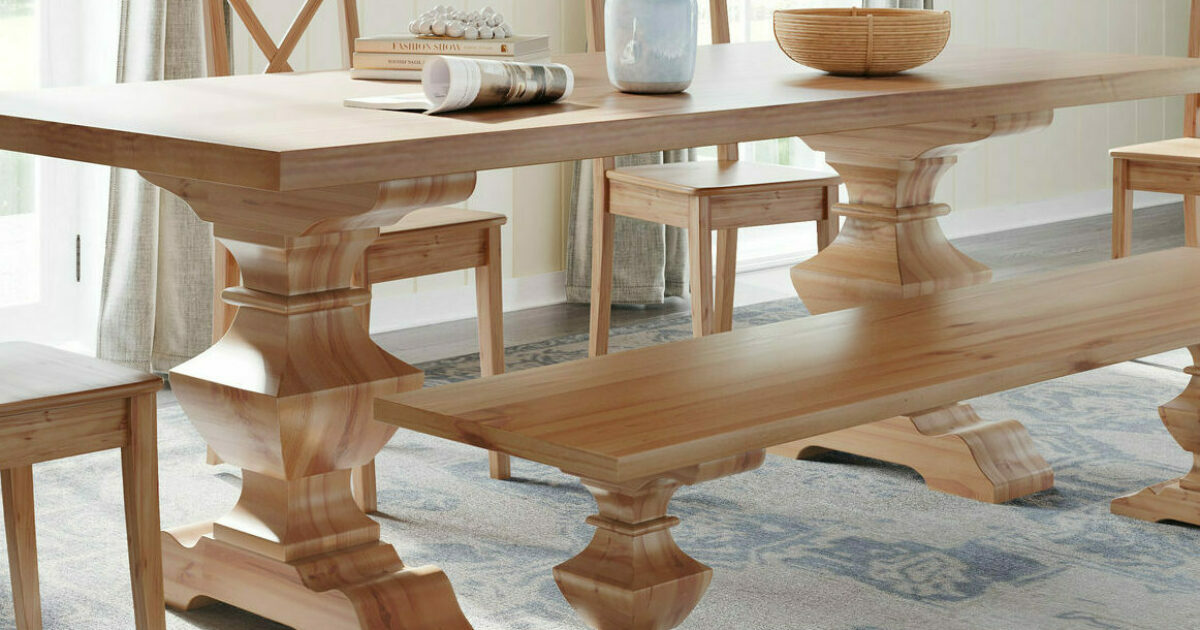Redefine Your Table's Charm with Stunning Dining Table Legs Wood Layouts
Redefine Your Table's Charm with Stunning Dining Table Legs Wood Layouts
Blog Article
Secret Factors to Remember for Eating Table Legs Timber Choices
When choosing wood for eating table legs, several essential aspects require mindful consideration to ensure both performance and aesthetic charm. The choice of wood kind, defined by its durability and special grain patterns, plays a critical duty in the overall layout and longevity of the item. Additionally, one need to ponder maintenance needs and the environmental ramifications of sourcing products. As these elements intertwine, they dramatically influence the final result of your eating table. However, comprehending the subtleties of each factor can be complicated, bring about essential choices that warrant more exploration.
Wood Types and Qualities
When choosing wood for dining table legs, it is vital to comprehend the special attributes of numerous wood types. Different woods offer distinct benefits and negative aspects, affecting both the longevity and visual allure of the completed product.
Oak, recognized for its excellent sturdiness, also includes a famous grain that can include personality to the table. Cherry wood, with its abundant color that grows over time, supplies an elegant appearance but might need even more maintenance to protect against scratches.
On the various other hand, softwoods like yearn and fir are more inexpensive and easier to collaborate with, yet they are much less resilient than woods. Pine is lightweight and includes a cozy, rustic appearance, making it a preferred choice for laid-back eating settings. It is more vulnerable to scratches and dents.
Understanding these features will assist in making a notified decision to make sure the legs of the table fulfill both practical and visual needs.
Grain Patterns and Visual Appeal
The wood's grain is not just an aesthetic attribute; it imparts an one-of-a-kind character and charm to each piece. Various timber varieties exhibit distinct grain patterns, ranging from the straight lines of maple to the detailed swirls of oak and the striking number of walnut.
In addition, the alignment and range of the grain can affect the regarded size and sophistication of the table. Bigger, much more pronounced grains may lend a strong, significant effect, while finer, subtler grains can produce a fine-tuned, underrated appearance. Additionally, the ending up process can better enhance these patterns, emphasizing the all-natural elegance of the wood and drawing out rich shades.
Ultimately, the option of grain pattern ought to harmonize with various other design elements, such as the tabletop and surrounding furniture, guaranteeing a cohesive aesthetic that boosts the dining experience. Thoughtful option of timber grain not only contributes to the table's elegance however additionally reflects the owner's preference and style.
Durability and Stamina
The longevity and stamina of eating table legs are paramount considerations for guaranteeing longevity and stability in any dining space. Selecting the right wood is essential, as different species show differing degrees of durability.

Ultimately, buying high-quality wood and durable building and construction approaches will certainly generate an eating table that stands the test of time, while offering a trustworthy structure for many meals shared among family and friends. Prioritizing longevity and stamina makes sure that your eating table stays practical and visually pleasing for years ahead.
Upkeep and Care
Proper upkeep and treatment are important for protecting the sturdiness and stamina of dining table legs made from timber. Routine cleaning is essential; making use of a soft, moist cloth ensures that dirt and debris do not accumulate, which can bring about scratches and monotony. It is a good idea to avoid harsh chemicals or unpleasant materials that can harm the finish.
In addition, applying an ideal wood gloss or wax periodically can aid preserve the luster and secure the wood from wetness and spills. It is critical to comply with the supplier's recommendations pertaining to the type of product to make use of, as certain finishes may respond detrimentally to certain chemicals.
Humidity and temperature level variations can additionally impact wooden table legs, creating them to warp or fracture. It's ideal to position the table far from direct sunshine and heat resources. If the table legs have any scrapes or dents, dealing with these promptly can avoid further damages.
Last but not least, occasionally evaluating the joints and screws for tightness is very important to maintain architectural honesty (Dining Table Legs Wood). By sticking to these maintenance methods, home owners can guarantee their wooden table legs remain useful and attractive for several years ahead
Environmental Considerations
When check it out selecting wood for eating table legs, it's necessary to take environmental considerations into account. The sourcing and sustainability of wood are critical in reducing eco-friendly effect. Choosing wood from certified sources, such as those endorsed by the Woodland Stewardship Council (FSC), ensures that the lumber is gathered properly, promoting forest preservation and biodiversity.

Moreover, neighborhood sourcing of wood reduces transport discharges, sustaining regional economic climates while reducing environmental influence. It is additionally advisable to be familiar with the timber's therapy and ending up procedures, as specific chemicals can be unsafe to both human health and the atmosphere. By prioritizing lasting wood choices, customers can contribute to environmental conservation while appreciating the durability and elegance of their eating table legs.
Verdict
To conclude, picking wood for eating table legs demands mindful consideration of various variables, including wood types, grain patterns, and toughness. The visual appeal of unique grain patterns can boost the overall layout, while the stamina of woods makes sure longevity. Maintenance needs and environmental sustainability additional influence timber options, stressing the significance of sourcing from licensed or redeemed products. An educated option process ultimately adds to a functional and aesthetically enticing eating space that straightens with lasting methods.
When choosing wood for eating table legs, several important aspects call for mindful factor to consider to make certain both performance and aesthetic charm.Correct maintenance and care are important for preserving the longevity and strength of dining table legs made from wood.When picking timber for eating table legs, it's vital to take ecological considerations into account. By focusing on sustainable timber choices, customers can contribute to environmental conservation while enjoying the longevity and beauty of their eating table legs.
In final thought, my link choosing wood for dining table legs requires mindful consideration of different elements, consisting of timber types, grain patterns, and longevity. Dining Table Legs Wood.
Report this page